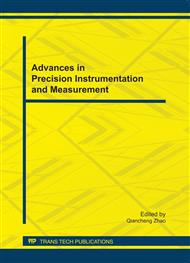p.378
p.383
p.388
p.394
p.399
p.404
p.410
p.417
p.422
Control and Optimization of Negative Pressure in Scrap Copper Smelting
Abstract:
Negative pressure is the main control variable in scrap copper smelting process, the control of negative pressure is not only closely related with producing safely, but also produces a direct impact on the quality of the anode plate, it is also a key breakthrough in energy saving. This paper first analyses the characteristics of negative pressure control in scrap copper smelting process, aims to larger overshoot and longer regulation under conventional PID control method, and then utilizes fuzzy control to correct the PID parameters online, to achieve the optimization control of negative pressure. Simulation result shows that the adjustment process of optimized control of negative pressure is steady and rapid, usually no or slightly overshoot, and the settling time is also reduced significantly.
Info:
Periodical:
Pages:
399-403
Citation:
Online since:
September 2011
Authors:
Price:
Сopyright:
© 2012 Trans Tech Publications Ltd. All Rights Reserved
Share:
Citation:


